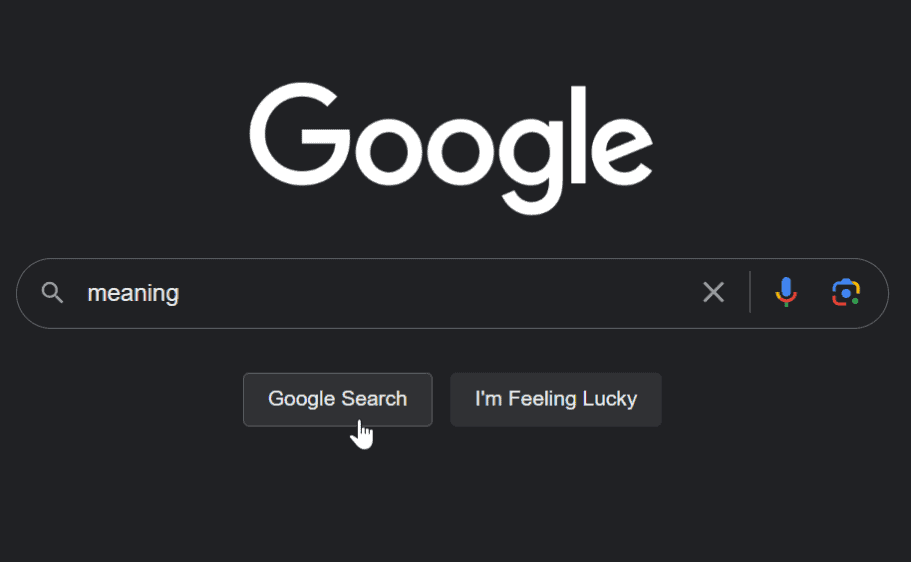Bite the Bullets (A quick summary if you don’t want to read the whole article)
- Mental models are thinking tools that simplify complex parts of life into simple, memorable and actionable pieces
- They are important because they make it easier to avoid making the same mistakes more than once
- Some quick google-able ones: Principle of Charity, Pareto Principle, Occam’s Razor, Hanlon’s Razor
- Frameworks are collections of mental models that work together
- One approach to creating any new mental model: Figure out where you have repeated behavior or problems
Take extra time up front solve the problem sustainably (rather than with duct tape)
Condense the solution into an easy-to-remember principle or rule
Apply it to similar problems and improve it
What’s a mental model and why should I care?
In its most basic form, a “mental model” is something in your mind (mental) that represents (models) a pattern, structure or fact outside of your head. In this context, it’s a simplification of a complex system, so that the brain can keep track of the important parts of a complex system it wouldn’t otherwise be able to.
However, mental models can be as simple as memory mnemonics (e.g. ”Righty tighty, lefty loosey”) or as complicated as mind maps used to make decisions based on probability. An example you may have already heard of before is Occam’s razor, which roughly states the simplest explanation is usually correct.
Our lives are filled with traps that prevent us from making good decisions. One very important use of mental models is avoiding these traps. We can rely on mental models to trick ourselves into doing the right thing more often.
Sometimes I get into fights with the people I care about. When I’m in a conflict, all I can think of is what the other person did wrong. I get so worked up imagining their bad behavior, I don’t pause to think about what their actual intention was. What if I do pause for just a minute and consider if they are trying to hurt me, or if they have accidentally hurt me? Almost every time, I realize this person I care about is not trying to hurt me.
Instead of going through the heartache of imagining how my loved one is trying to tear me down, I skip to the part where I trust that they have good intentions. This is a great mental model to adopt. It’s called “The Principle of Charity.”
My version of the Principle of Charity states: you should go into any interaction with the charitable notion the other person knows what they are talking about and has positive intentions. In other words, assume their intent is positive and their thinking logical. It’s simple, but powerful.
The key to any of mental model is to try it out, see if it works repeatedly, and then change your habits around using the model instead of your default behavior. If you do these optimizations over and over and over, you end up with dramatically positive results. Decisions that used to take a long time, or cause you angst, are really simple because you’ve trained yourself.
There’s a trick here too, you might have noticed I just presented another mental model for measuring mental models! The most powerful mental models are ones that can be described as “meta-systems.” Literally meaning “beyond the system.” (Or in this case acting on other mental models).
Imagine three buttons: one you push for a bowl of cereal, one push for milk and one you push to vend a spoon.

The meta button would be one you push, which activates all three buttons.

Our goal is to create mental models that are as meta as possible but still practical.
A few useful mental models
I find myself using these most days. There are some great lists that others have compiled as well; this is just a taste. You’ll recognize a couple from earlier.
- Try it first
- I’ve had friends tell me in various ways: “I know if I did yoga every morning before work, my life would be better.” Replace yoga with crossfit, swimming, cycling or whatever physical activity you fancy. When I follow up with: “have you ever done yoga in the morning before work?” The answer is almost always “No.” What that tells me is they don’t actually know if doing yoga before work is going to better their lives. They haven’t tried it, but they feel guilty that they can’t get up early enough to make it a habit. It’s better to approach things like this with a simple caveat: “I think yoga in the morning will make my life better.” Two words. Big difference. The goal then is not to do yoga every morning, but to try yoga in the morning maybe for a few days, then decide if it actually makes your life better based on the results.
- Test assumptions (idiom: When you assume you make an ass of u and me)
- Assumptions are a little dangerous. They are necessary to make decisions, but wrong assumptions lead to wrong decisions. That means when we are measuring their “meta-ness” in a system, it’s going to be high. The actual mental model here is not to avoid assumptions entirely, but to make assumptions smarter: to test their validity. Reflect on each assumption to create a test for whether or not it’s true, and run that test.
- E.g. assumption: I assume my roommate didn’t drink all my milk. Test: yup, milk is still there. The example of the milk may be a little silly, but the point is you can derive much more from a tested assumption than one you’re unsure of.
- One last very common example. Assumption: “I’m the type of person who goes to the gym every day.” That assumption, if untested turns into a belief. In this case, the test is a simple count of the times in the recent past that you’ve gone to the gym. Once again, replace gym with any activity you want to be true about your identity. “I’m the type of person who paints every day.” The take home is assumptions about our identities need to be tested. If they turn out to not be true, it’s valuable information for us to act on.
- Assumptions are a little dangerous. They are necessary to make decisions, but wrong assumptions lead to wrong decisions. That means when we are measuring their “meta-ness” in a system, it’s going to be high. The actual mental model here is not to avoid assumptions entirely, but to make assumptions smarter: to test their validity. Reflect on each assumption to create a test for whether or not it’s true, and run that test.
- The Hangry Rule (Physiology wins)
- Check out Maslow Revisited for a full break down of this. There’s a series of Snickers commercials showing famously angry actors eating a Snickers bar and turning back into normal, calm people. They finish with the tagline “You’re not you when you’re hungry.” This is true for when you’re thirsty and tired as well. It’s important to manage your physiology in unison with making hard decisions or doing work. If you don’t, you’ll make more mistakes.
- Pareto principle, the 80-20 rule
- If you’re unacquainted, this is a powerful rule of thumb to have in your back pocket. This is the simple observation that most things in life are unevenly distributed. It was noted in the 19th century by an italian economist named Vilfredo Pareto when he observed that 80% of the land in Italy was owned by 20% of the population. It turns out it’s a very common distribution. The more useful version is “80% of results come from 20% of the effort.” That means finding that 20% is the most important step before starting out.
- Hanlon’s Razor
- “Never attribute to malice what can adequately be explained by stupidity.”[1] In other words, the bad thing someone just did to you was probably a mistake and not a personal attack. This helps with things like avoiding road rage; people do stupid stuff all the time in traffic. It’s equally perilous to assume every person is an idiot, but giving people the benefit of the doubt and being forgiving is just a better headspace.
Frameworks and making new mental models
The next logical step is compiling several models you find useful into a set that works together. I call this a framework. Some models work better when coupled with others. They have stacking effects.
Over the years, I’ve picked up a bunch of different tools for studying, some ideas about the best way to retain information and, through trial and error, the best ways for me personally to engage with material. I put all these mental models into a basket and call it my “learning framework.” The best way for me to learn something with as little wasted effort as possible.
Frameworks are really powerful, because once you create one that works, you can offload all that thinking into a practice. You don’t need to reinvent the wheel every time. It’s an organized approach to making personal experience useful in the future.
Making a framework is a great way to get started creating your own custom mental models. When you take general strategies you’ve found from other people and put them into a framework, you’ll start to see gaps where there isn’t already a strategy for a specific part of the problem. Usually those gaps can be filled by tweaking a model you’ve already heard of. Bingo! That’s a new mental model. It turns out this is a good recipe for any mental model. It’s just easier if it already fits into a system, or is based on an existing mental model.
It goes like this: start with a difficult task. As soon as you try to solve pieces of it, you’ll see there are things you need to figure out on your own that look like problems you’ve seen before. So, learn what you need and solve your own problems. This is where a lot of people stop. There are two differences between a one-off solution and a mental model: 1) how condensed it is into an easy to remember principle or set of rules and 2) if it can be applied to similar problems. When you apply the solution to a new problem, it will be easier to apply to others. The real secret is you’ve already got the tools to do this, you just need to figure out how to remember them and reuse them. That’s the mental model for creating mental models. Meta, right?
Notes
- This was the best source for when I tried to track down it’s origins, which isn’t saying much. Some say it’s actually “Heinlen’s razor:”, because this appeared in Logic of Empire in 1941: “You have attributed conditions to villainy that simply result from stupidity.”
- Bonus mental model: First Principles Thinking. This is a tool that comes from Physics, but was recently popularized by Elon Musk. The basic concept is reasoning from the simplest and most fundamental observations rather than by analogy. It’s accomplished by questioning the problem until you reach some fundamental truth and then thinking hard about what that truth means.
- For example, say you want to buy an engagement ring and you’re trying to figure out the cost. One way is go look at prices at a store like Tiffany’s. This would be reasoning by analogy. “A wedding ring can cost anywhere from few hundred to a few thousand.” Another way to think about the cost of a ring is to look at the cost of the materials. A few grams of gold and a diamond might cost a lot less, even including the cost of having a jeweler set the stone.



